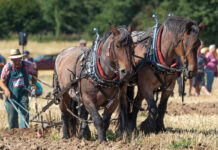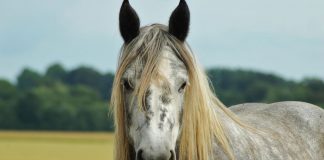Don’t let horse allergies hinder your riding plans this spring.
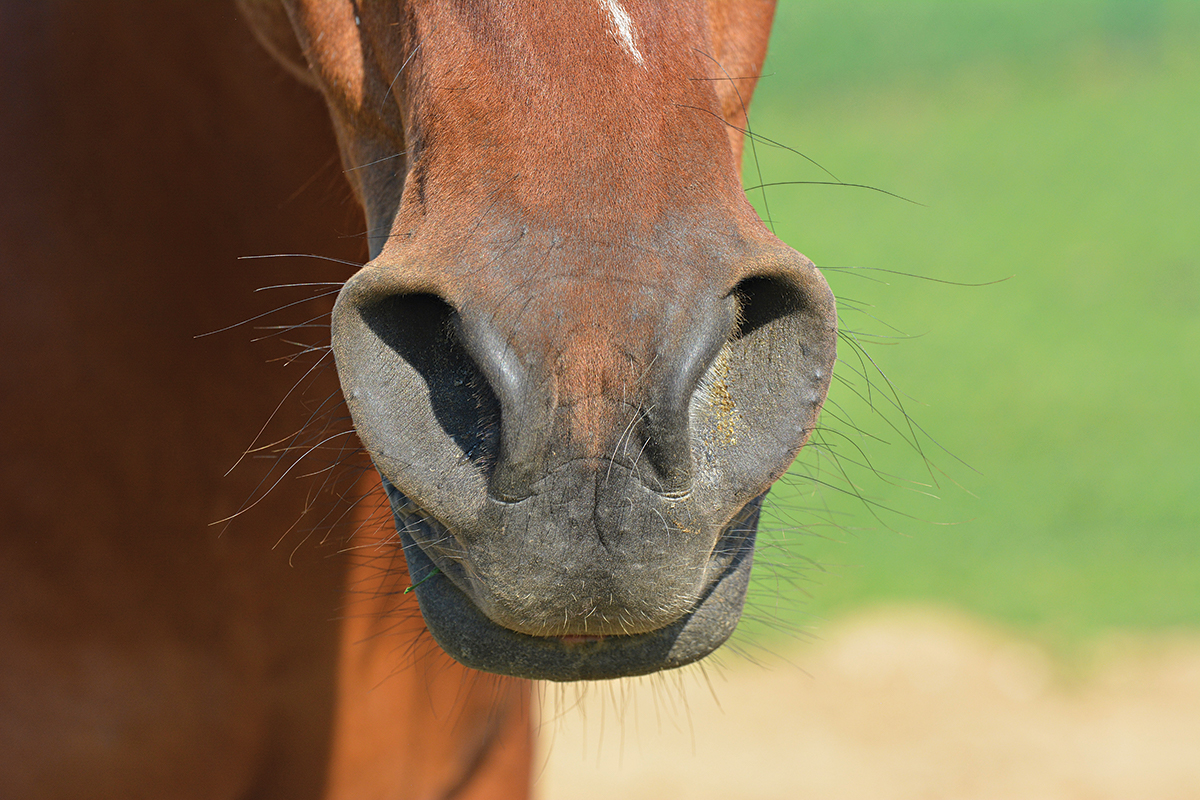
In another barn, a rider grabs the grooming kit to brush her horse in preparation for the saddle. As she runs her hand over his neck, she feels, and then sees, numerous bumps, some of which have merged to form large bumps.
What is going on with these horses? Allergies.
A Teeming World of Horse Allergies
Unseen by the naked eye, the world is abundant in proteins and substances that can incite an allergic response. These allergens may be inhaled, ingested, or may affect a horse through topical contact. You’ll be tipped off to signs of trouble when you notice your horse has itching, hives, or breathing problems.
Allergies are common throughout the human and animal world, and horses are no exception. Usually, horses manage in their environment just fine without developing obvious signs that microscopic compounds are affecting them. Horse allergies happen when a horse’s immune system overreacts to a foreign protein, goes on the offense and becomes over-sensitized.
Sometimes it takes months or years of accumulated exposure for a horse to become hypersensitive; sometimes the response is more immediate and acute. Whatever specific protein causes the reaction, it sets up a cascade of inflammatory events that release prostaglandins and histamines to create obvious skin or respiratory allergic signs.
Skin Allergies in Horses
Horse allergies that manifest in the skin may result from topical contact, but also may develop from oral ingestion or inhaled particles. Aerosolized dust, mold, pollen, bedding, and insect bites are just a few of the sources that can cause itching and/or hives.
A major cause of itching starts with the bite of insects called Culicoides, also known as midges or no-see-ums. While the midges tend to feed on the abdomen, a horse displays an allergic response to the midge saliva by aggressively rubbing his tail, hindquarters, neck and mane due to intense itching. Those areas become raw, crusty, and inflamed, with substantial hair loss.
Some breeds and lines of horses tend to be particularly allergic to midges, such as Morgans, Icelandics and Arabians. The solution relies on moving the horse away from areas favorable to midge breeding, like ponds, wetlands and slow-moving streams.
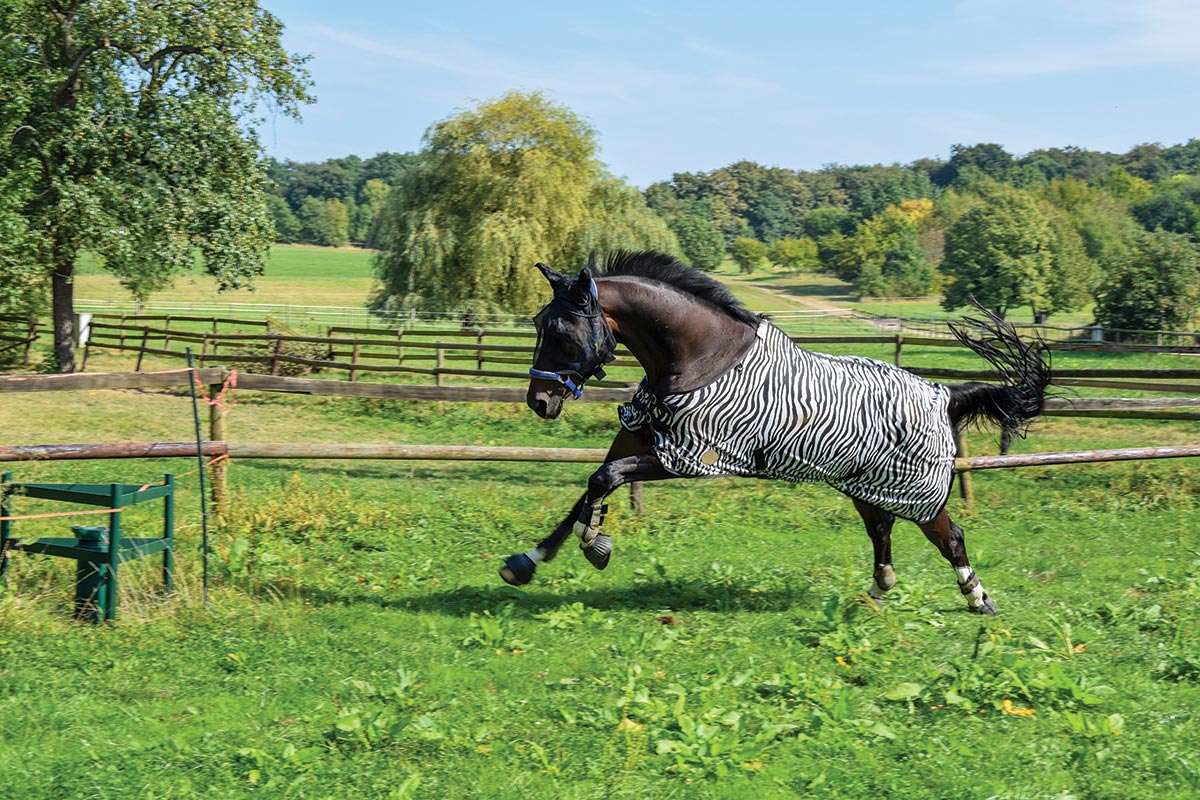
Fly sheets are important, but they should have belly bands of netting material. Bringing a horse inside at dusk and dawn also helps to reduce midge exposure, as that is their preferred feeding time.
In contrast to an itching reaction (pruritus), hives aren’t typically itchy but herald a definite sign of exposure to some kind of allergen. Hives tend to be soft swellings that indent when you push in with your finger, called pitting edema.
They may be variable in size, sometimes coalescing into one big welt when several are close together. Inhaled allergens also can cause hives, referred to as atopic dermatitis.
Contact dermatitis is also not unusual. One example that occurs fairly commonly is hives from contact with pine bedding. If there is a suspicion that bedding is a problem, substitute paper bedding or a different source of pine bedding to see if the hives resolve.
Some shampoos or fly sprays can cause skin irritation and hives, as can laundry detergent residue or dirt on a saddle pad. On rare occasions, a horse with a fungal infection called ringworm may develop hive-like reactions around a fungal lesion.
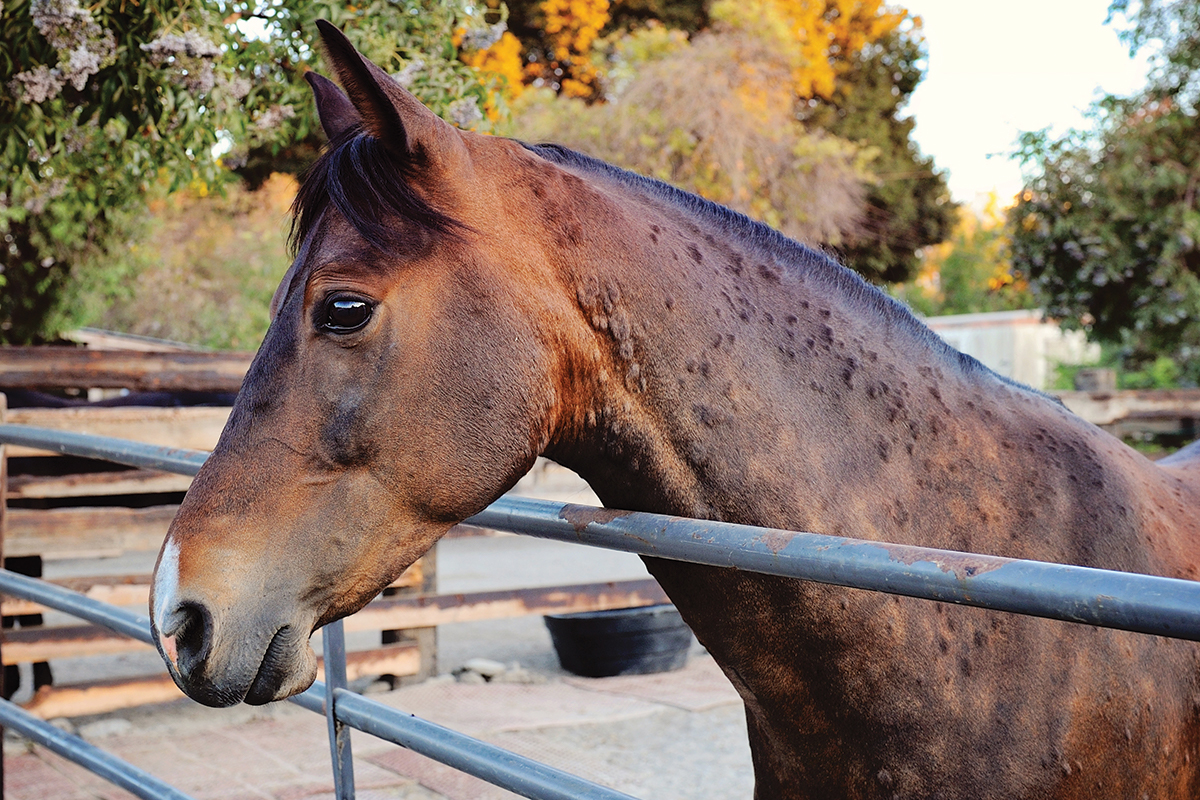
Hives can develop acutely and disappear just as quickly. Sometimes they persist long after the allergen is removed from the environment. In difficult cases, it may be necessary to medicate the horse with a short course of a corticosteroid like dexamethasone or prednisolone, which are effective anti-inflammatory medications.
Certain feedstuffs can set off a skin reaction, although food allergies are not that common. If it is a food allergy, however, it’s often a challenge to determine the exact food or oral substance that is the culprit.
This may need to be done through a process of elimination: eliminate all food and supplements and start by feeding only grass hay, although diet changes may need to be done slowly. Check with your vet. After a couple of weeks with no signs of hive lesions, add in one more food element and wait a week or two before adding in another. This may help pinpoint the cause.
Supplements tend to be the likeliest culprit, far more than hay or feed materials, although alfalfa has been known to cause allergic reactions.
Respiratory Allergies in Horses
Respiratory allergies can affect horse performance by impacting breathing and comfort, especially during exercise. A horse with a respiratory allergy often has a dry cough or wheezing that amplifies when he is eating or exercising. There may be a chronic or intermittent nasal discharge, as well.
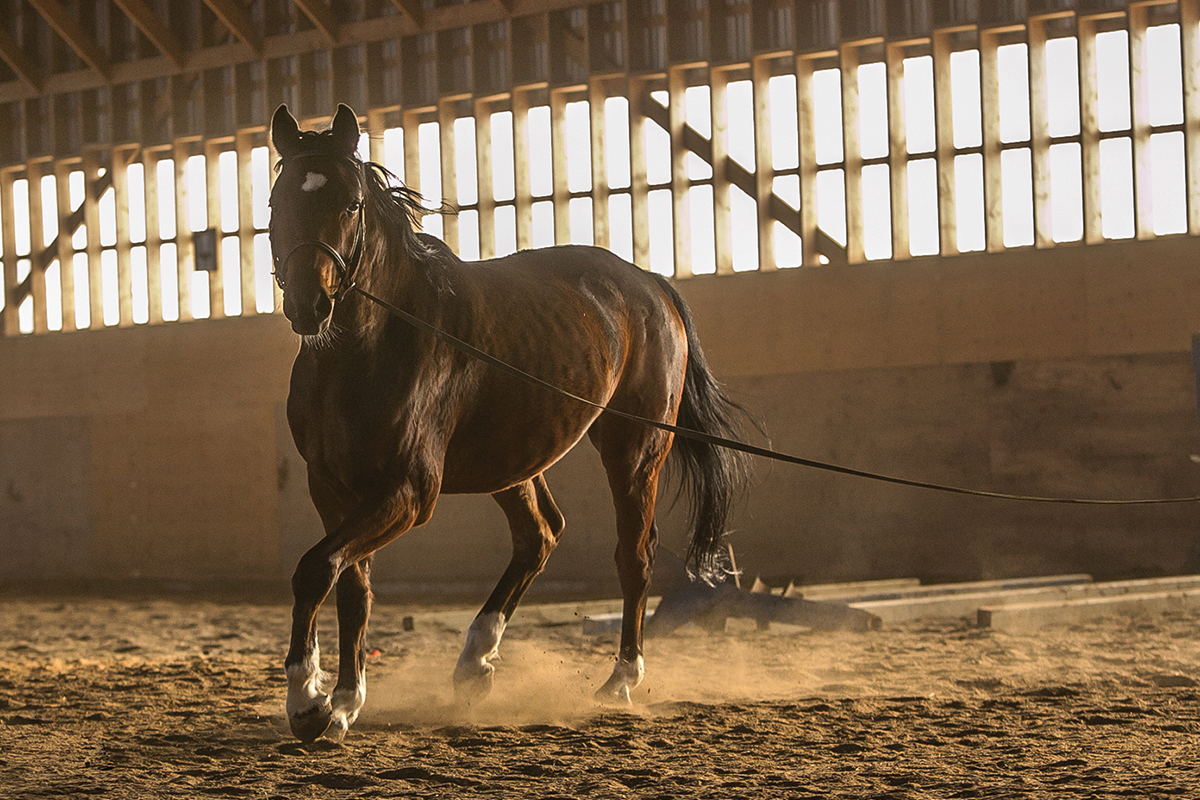
Respiratory health is at risk when horses are placed inside barns, especially those with poor ventilation, and/or are exercised in indoor arenas. Many toxic compounds are aerosolized to circulate in the air in those environments: endotoxin (part of the cell wall of Gram-negative bacteria) in manure, ammonia vapor from urine-soaked bedding, mold spores from hay, or hay dust filtering down when stored in lofts above the stalls or arena. Arena footing can also contribute to respiratory irritation.
The best solution is to minimize a horse’s time indoors and instead turn him out as much as possible. Better yet, arrange full-time outdoor living with run-in sheds to protect against inclement weather. Soaking or steaming hay before feeding helps tamp down dust and mold.
If barn living is all you have available, then implementing good ventilation is very important. Use appropriately placed fans, open windows, and open barn doors to keep fresh air circulating. Store hay in a building separate from horse housing.
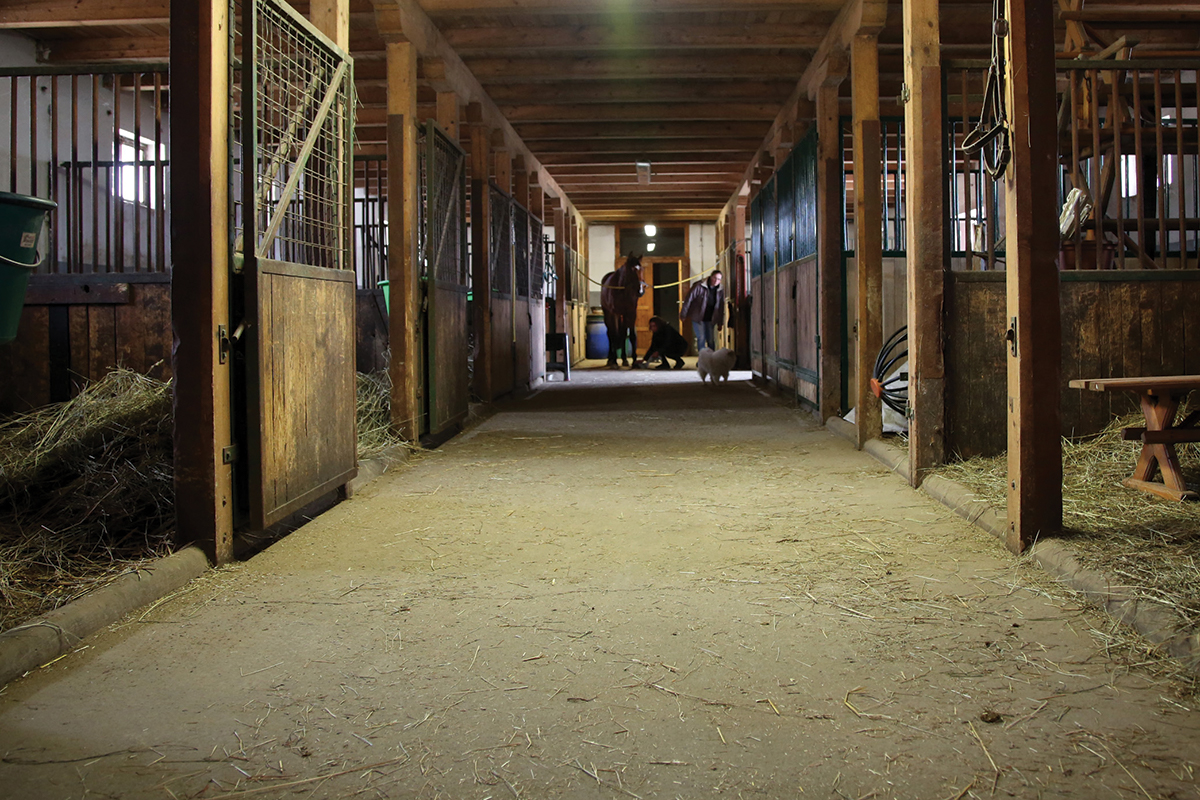
Another important strategy for respiratory health is to keep your horse on a regular immunization schedule, especially against respiratory viruses. Equine influenza virus is known for causing long-term respiratory damage, including development of equine asthma. Discuss an appropriate vaccine schedule with your veterinarian.
Once a horse develops equine asthma, a variety of medications, including inhaled and/or oral bronchodilators, can help improve his comfort and ease of breathing. It is much easier and more effective to apply an ounce of preventive strategies for respiratory health than a pound of cure to treat after the fact.
Equine Anaphylaxis
In an instance where a horse’s immune system develops a profound and severe reaction, a horse can experience life-threatening anaphylaxis. With that in mind, it’s important to contact your vet immediately when seeing signs of an allergic response, particularly if your horse is having difficulty breathing and/or there is swelling of his face and muzzle or limbs and belly.
If your horse has a known allergy to a medication, such as penicillin or a non-steroidal anti-inflammatory drug (NSAID) like phenylbutazone or flunixin meglumine, it’s critical to place caution signs on the horse’s stall door and paddock to prevent accidental administration of potentially deadly drugs.
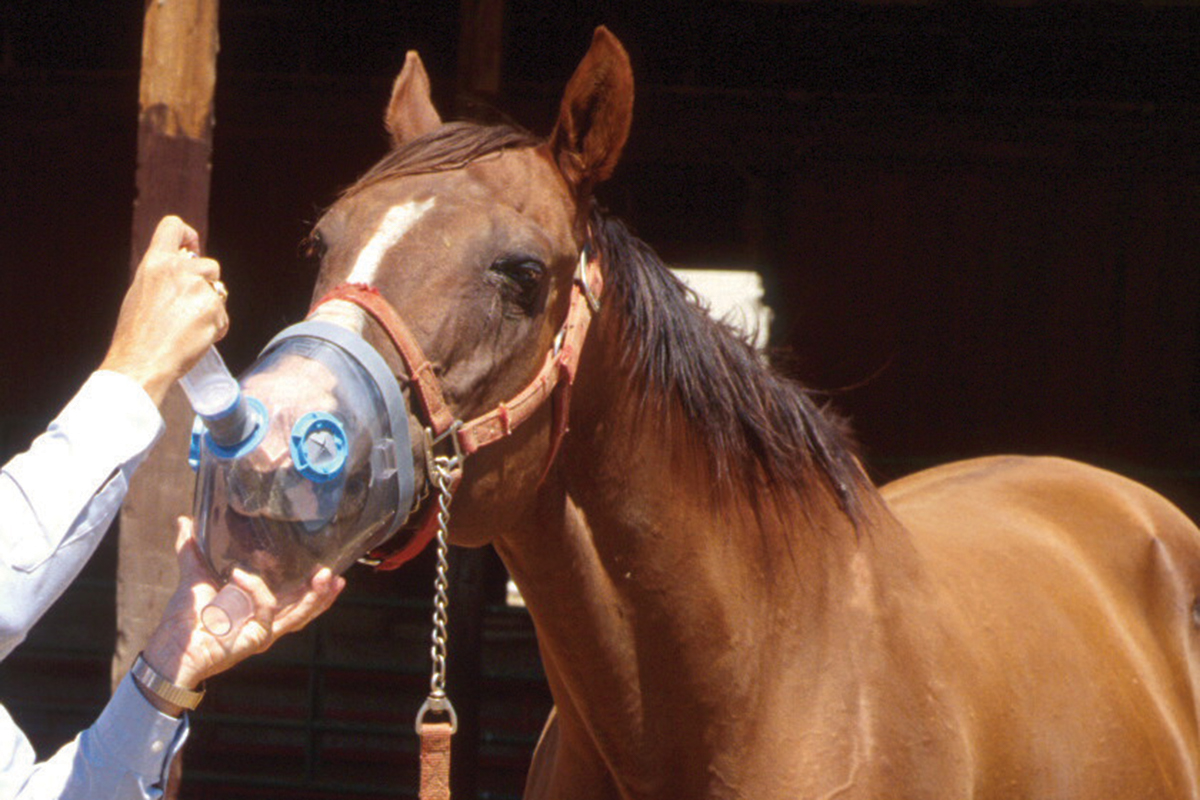
People with allergies wear neck tags or bracelets to convey this critical information, but for horses, it’s necessary to post signs in obvious places. Advise your barn manager and staff, friends and veterinarians who may deal with your horse.
Allergies can be troublesome to resolve, so observe and monitor every facet of your horse’s environment. With knowledge about potential problems, you can deter allergic problems before they begin.
This article about horse allergies appeared in the May 2021 issue of Horse Illustrated magazine. Click here to subscribe!



